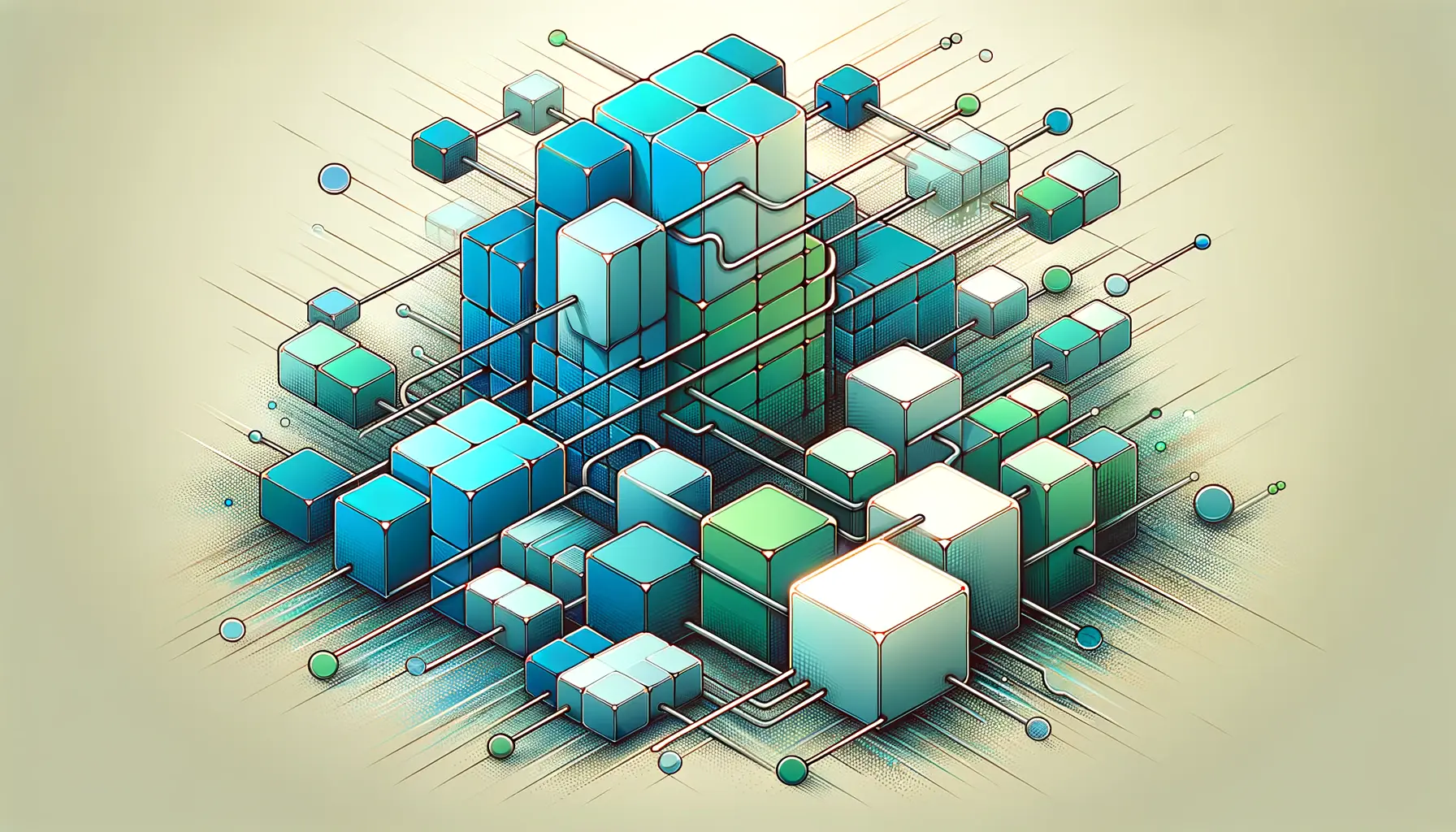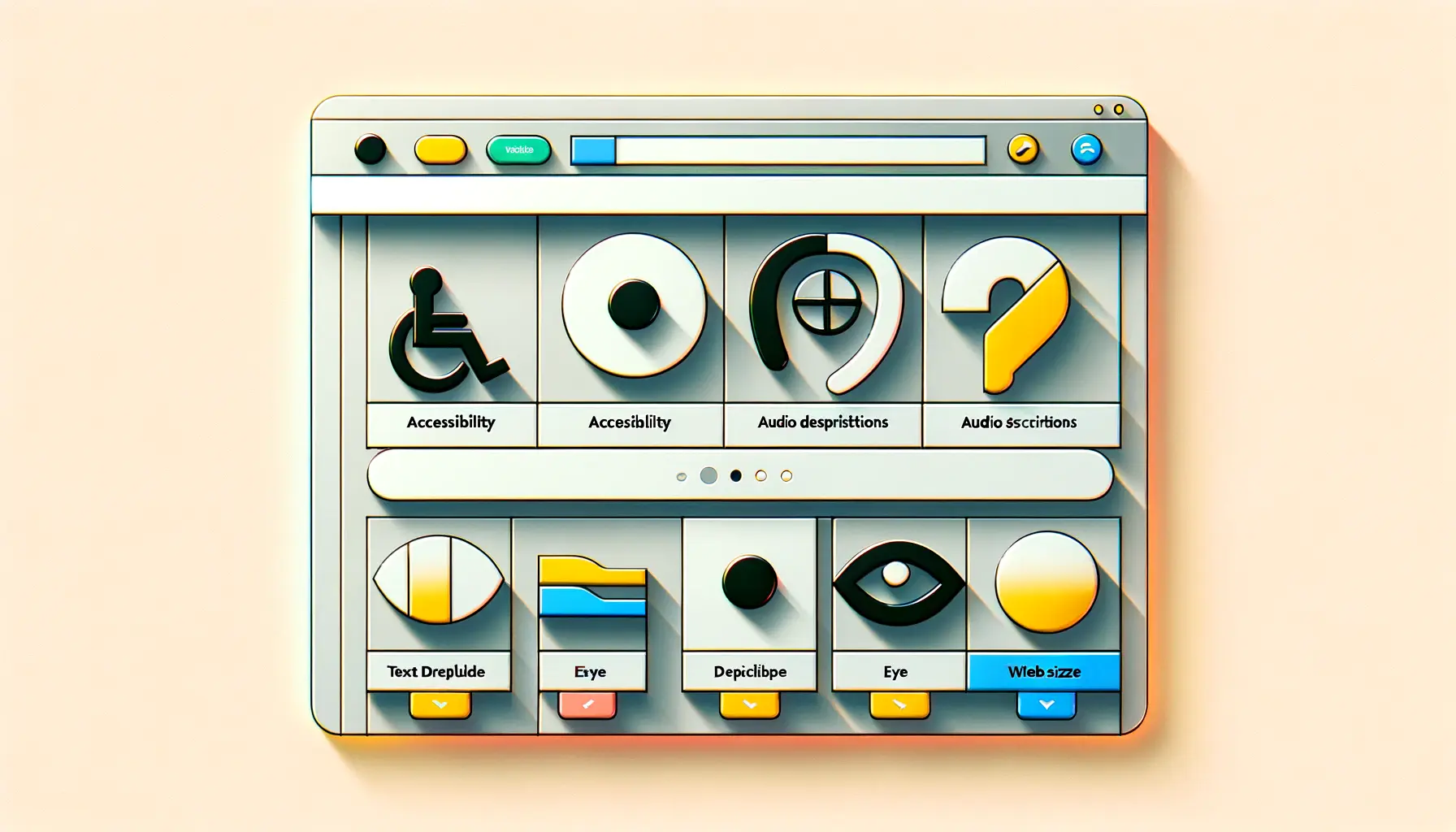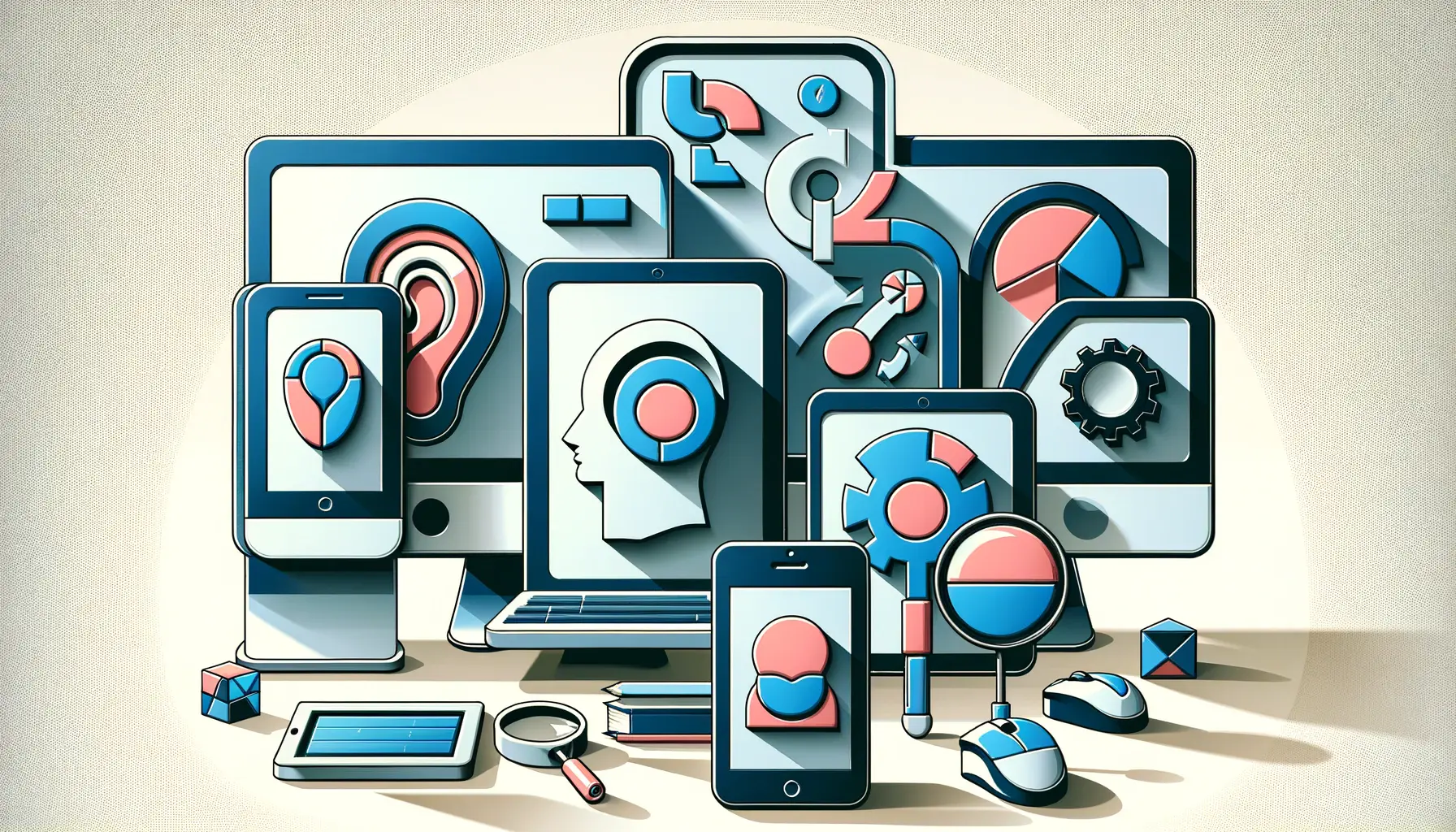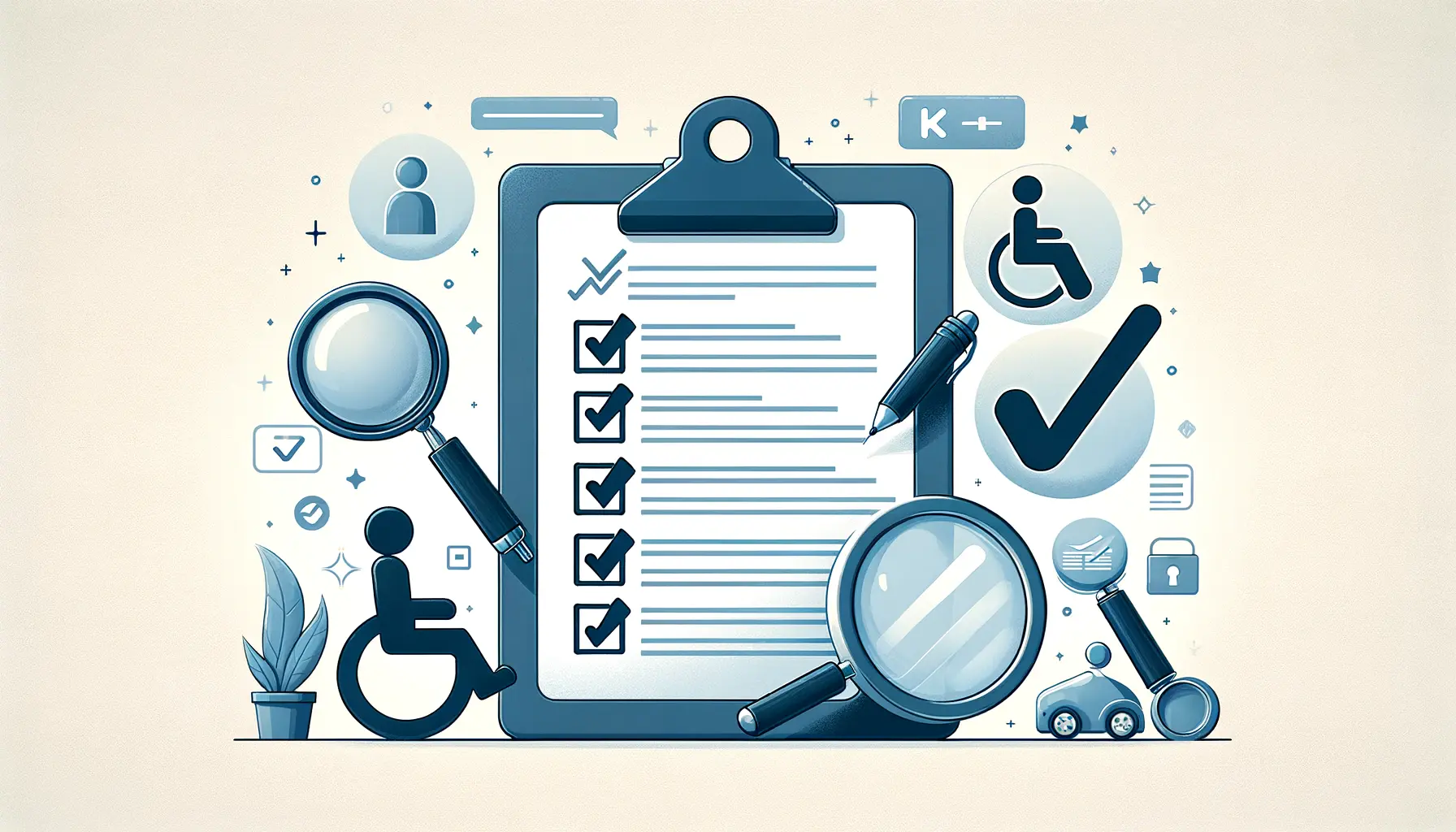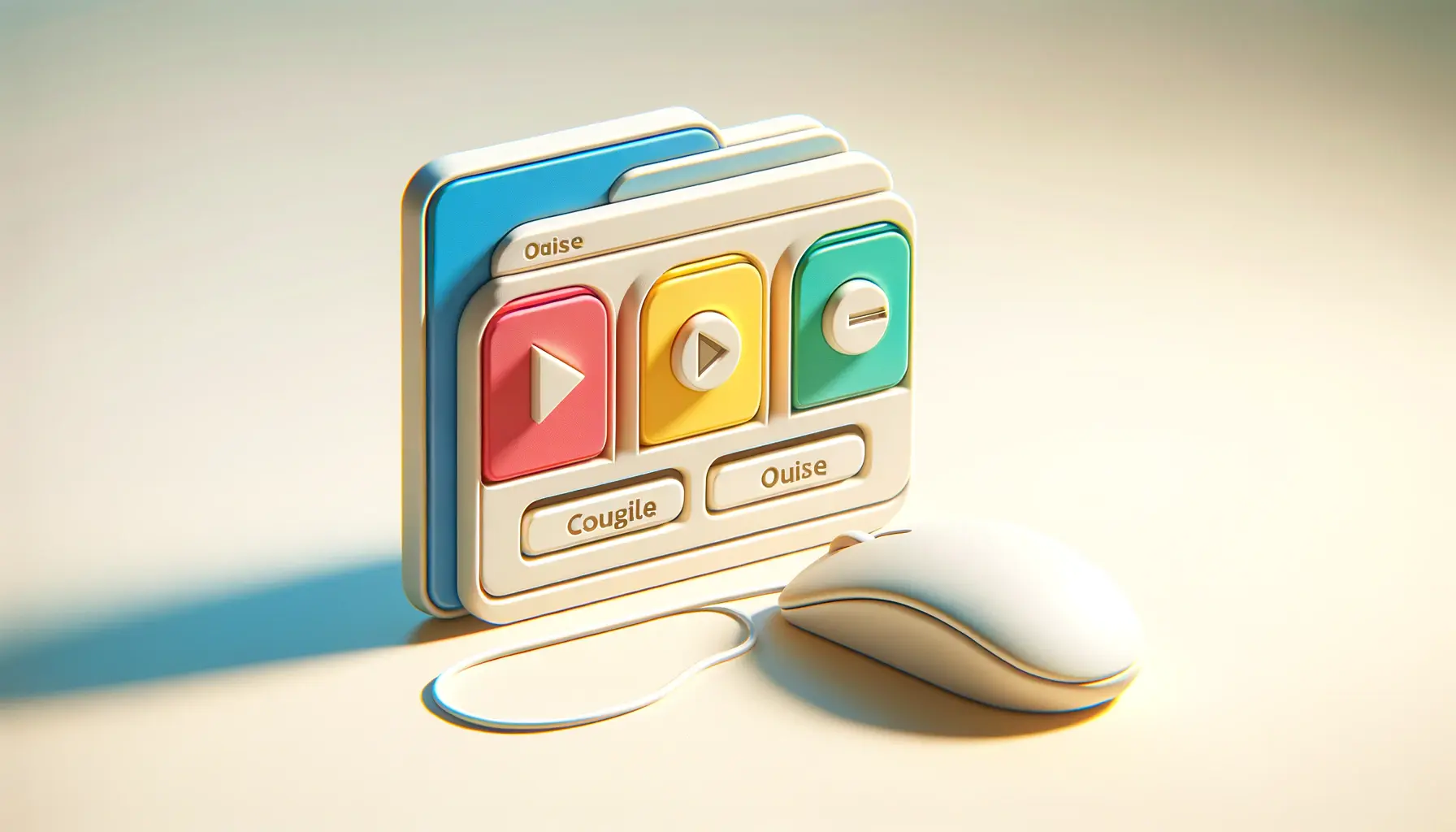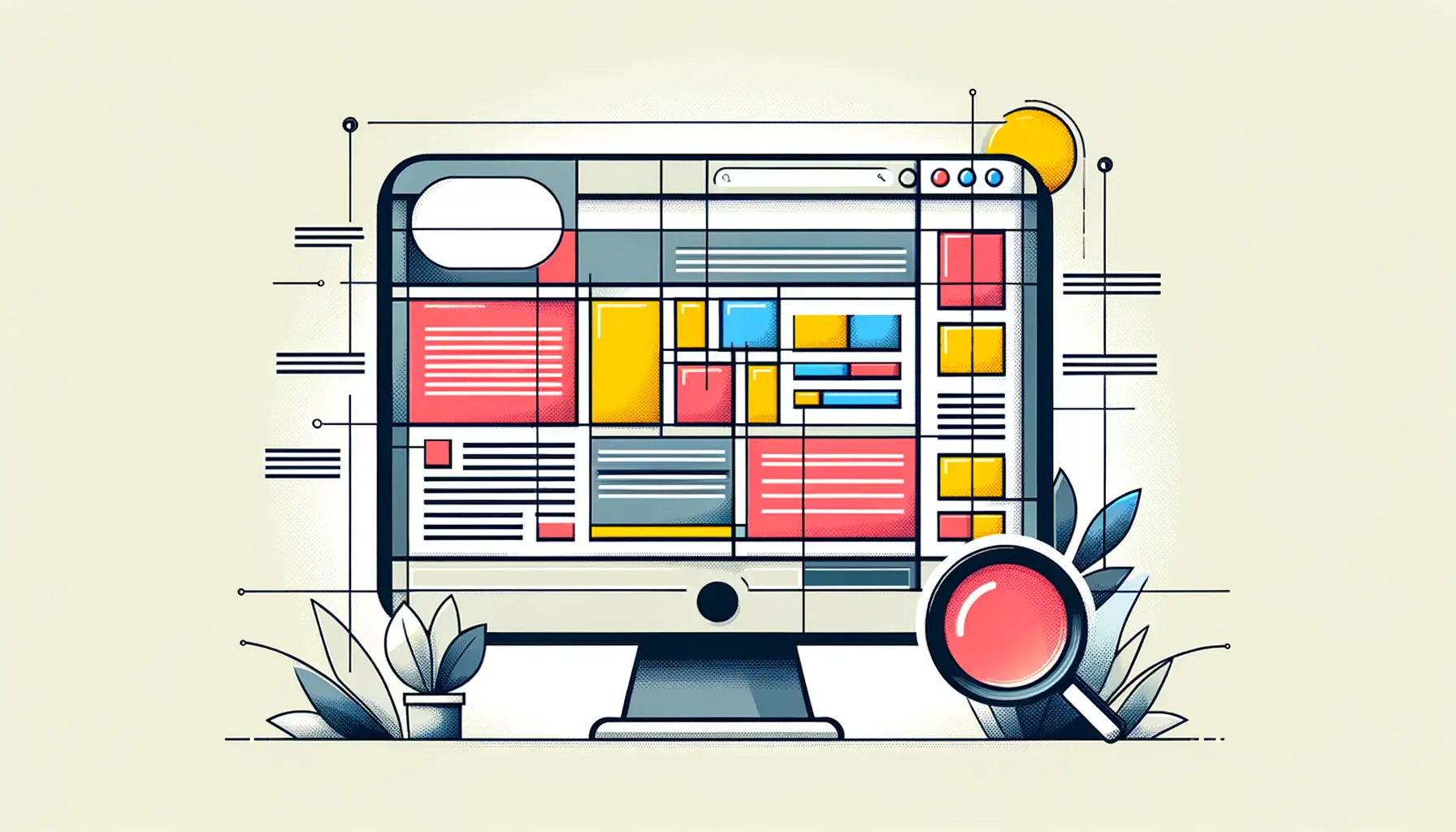The digital landscape is evolving at an unprecedented pace, with blockchain technology at the forefront of this transformation.
Blockchain, originally devised for the digital currency Bitcoin, has emerged as a revolutionary technology that promises to redefine the web design and development industry.
Its potential to offer secure, decentralized, and accessible web solutions has sparked interest among developers, businesses, and users alike.
This article delves into how blockchain technology can be harnessed to create web designs that are not only secure but also universally accessible, ensuring a seamless and safe online experience for everyone.
At its core, blockchain technology is a distributed database that allows for secure, transparent, and tamper-proof transactions.
By leveraging blockchain, web designers and developers can create websites and applications that prioritize user security and data integrity.
This technology offers a new paradigm for web design, where trust, security, and accessibility are integral components of the development process.
As we explore the intersection of blockchain and web design, it becomes clear that this technology holds the key to addressing some of the most pressing challenges in the digital world today.
- Understanding Blockchain’s Role in Web Design
- Blockchain’s Impact on User Experience and Accessibility
- Blockchain for Data Integrity and Privacy
- Smart Contracts and Decentralized Applications
- Blockchain in E-commerce and Online Marketplaces
- Blockchain for Content Management and Publishing
- Future Trends in Blockchain and Web Design
- Embracing the Blockchain Revolution in Web Design
- FAQs on Leveraging Blockchain for Web Design
Understanding Blockchain’s Role in Web Design
The Basics of Blockchain Technology
Blockchain technology is essentially a decentralized ledger that records all transactions across a network of computers.
This ensures that each transaction is secure and transparent, making it nearly impossible to alter any information without the consensus of the network.
The implications of this technology for web design are profound, as it introduces a level of security and trust that was previously unattainable with traditional centralized databases.
The decentralized nature of blockchain means that information is not stored in a single location but is instead distributed across multiple nodes.
This not only enhances security by reducing the risk of data breaches but also ensures that the website or application remains accessible even if one or more nodes are compromised.
For web designers, this translates to the ability to create more resilient and reliable online platforms.
Enhancing Web Security with Blockchain
One of the most significant advantages of integrating blockchain into web design is the enhanced security it offers.
With cybersecurity threats on the rise, protecting user data has never been more critical.
Blockchain’s cryptographic algorithms ensure that all data stored on the network is encrypted and secure from unauthorized access.
This level of security is particularly beneficial for websites and applications that handle sensitive information, such as financial transactions or personal data.
Moreover, blockchain technology can effectively combat common web vulnerabilities, such as DDoS attacks and data tampering.
By distributing data across a network of nodes, blockchain makes it exceedingly difficult for attackers to target a single point of failure.
This distributed approach to data storage not only bolsters security but also promotes a more accessible and equitable web by ensuring that information is freely and reliably available to all users.
Blockchain technology revolutionizes web design by offering unparalleled security and accessibility, paving the way for a safer and more inclusive digital world.
Blockchain’s Impact on User Experience and Accessibility
The integration of blockchain technology into web design extends beyond security enhancements, significantly impacting user experience (UX) and accessibility.
By redefining the way data is stored, managed, and accessed, blockchain offers a pathway to creating more user-friendly and accessible web environments.
This section explores how blockchain can improve UX and make the web more accessible to a broader audience.
Decentralization for Enhanced Accessibility
Blockchain’s decentralized nature inherently promotes accessibility.
Traditional web services rely on centralized servers, which can become points of congestion or failure, affecting site performance and accessibility.
Blockchain distributes data across a vast network, ensuring that services remain available even in the face of server downtime or targeted attacks.
This decentralization not only improves site reliability but also makes web content more accessible to users worldwide, regardless of local restrictions or infrastructure challenges.
- Global Reach: By eliminating central points of control, blockchain enables websites to serve users globally without the need for intermediaries. This is particularly beneficial for users in regions with restricted access to certain web content.
- Reduced Downtime: The distributed nature of blockchain minimizes the risk of website downtime, ensuring that users can always access the content or services they need.
Improving UX Through Transparency and Trust
Blockchain technology fosters transparency and trust, two pillars of a positive user experience.
By allowing users to verify transactions and data independently, blockchain empowers users with a sense of control and security.
This transparency is crucial for applications that require user trust, such as e-commerce platforms and online marketplaces.
- User Empowerment: Blockchain gives users visibility into the processes and transactions that affect their data, fostering a more transparent and trustworthy online environment.
- Enhanced Security: The inherent security features of blockchain, such as encryption and immutable record-keeping, contribute to a safer online experience, building user confidence.
Blockchain and Web Accessibility Standards
Incorporating blockchain into web design can also align with and support web accessibility standards.
By ensuring that data is secure, transparent, and reliably accessible, blockchain can help web developers create sites that are more inclusive and usable for people with disabilities.
For instance, blockchain can secure and authenticate user preferences for accessibility settings, ensuring that these preferences are consistently applied across decentralized applications (dApps).
- Personalization: Secure storage of accessibility preferences on a blockchain allows for personalized web experiences, catering to the unique needs of each user.
- Consistency: Blockchain can ensure that accessibility settings are consistently applied and respected across all dApps, improving the overall web experience for users with disabilities.
Leveraging blockchain for web design not only enhances security but also significantly improves the user experience and accessibility, making the digital world more inclusive and user-friendly.
Blockchain for Data Integrity and Privacy
In today’s digital age, data integrity and privacy have become paramount concerns for web users.
Blockchain technology offers a robust solution to these issues, ensuring that data is not only secure but also remains unaltered and private.
This part of the article explores the mechanisms by which blockchain preserves data integrity and upholds user privacy, contributing to a safer and more trustworthy web environment.
Blockchain’s architecture is inherently designed to safeguard data integrity.
Each block in the chain contains a cryptographic hash of the previous block, creating a secure link that ensures the continuity and unalterability of the entire chain.
This feature is crucial for maintaining the integrity of data once it has been entered into the blockchain.
Any attempt to alter the information retroactively would require changing all subsequent blocks, which is computationally impractical and easily detectable by the network.
- Immutable Records: Once data is recorded on the blockchain, it becomes immutable, meaning it cannot be altered or deleted. This permanence ensures that records remain intact and trustworthy over time.
- Timestamping: Blockchain technology timestamps each transaction, providing a verifiable and chronological record of events. This feature is invaluable for applications requiring a transparent audit trail, such as legal documents or supply chain management.
Enhancing Privacy with Blockchain
While blockchain is renowned for its transparency, it also offers mechanisms to protect user privacy.
Through the use of cryptographic techniques, such as public-key cryptography, blockchain enables users to transact and interact on the web securely without revealing sensitive personal information.
Users control their private keys, which serve as digital signatures to authorize transactions, ensuring that their identity and data remain confidential.
- Selective Disclosure: Blockchain allows users to choose which pieces of information they wish to disclose and to whom. This selective disclosure empowers users to maintain their privacy while still participating in digital transactions.
- Zero-Knowledge Proofs: Advanced cryptographic methods, such as zero-knowledge proofs, enable users to prove the validity of a statement without revealing any information about the statement itself. This technique further enhances privacy by allowing users to interact securely without exposing personal data.
Blockchain’s Role in GDPR Compliance
The General Data Protection Regulation (GDPR) has set a new standard for data privacy laws, emphasizing the importance of user consent and the right to be forgotten.
Blockchain can play a pivotal role in achieving GDPR compliance by providing a transparent and secure framework for managing personal data.
Smart contracts, for example, can automate the consent management process, ensuring that user data is collected and processed only with explicit permission.
- Consent Management: Blockchain can securely store user consents as immutable records, providing a clear audit trail for compliance purposes.
- Data Minimization: By enabling secure peer-to-peer transactions, blockchain reduces the need to store personal data on centralized servers, aligning with GDPR’s data minimization principle.
Blockchain’s contribution to data integrity and privacy is transforming the web into a more secure and user-centric space, where individuals have greater control over their personal information.
Smart Contracts and Decentralized Applications
The advent of blockchain technology has introduced the world to smart contracts and decentralized applications (dApps), two innovations that are reshaping web design and development.
Smart contracts are self-executing contracts with the terms of the agreement directly written into code, while dApps are applications that run on a decentralized network, free from the control of any single authority.
This section explores how these blockchain-based technologies are contributing to more dynamic, secure, and user-oriented web experiences.
Smart contracts automate traditional contract processes, reducing the need for intermediaries and thereby lowering costs and increasing efficiency.
When integrated into web design, smart contracts can facilitate a wide range of automated interactions, from e-commerce transactions to subscription services, all while ensuring the terms of the agreement are unalterably executed.
This automation not only streamlines operations but also enhances the user experience by providing faster, more reliable services.
- Automated Transactions: Smart contracts can automatically execute transactions once predetermined conditions are met, ensuring a seamless and secure exchange of goods, services, or information.
- Reduced Fraud: By executing transactions exactly as programmed without the possibility of downtime, censorship, fraud, or third-party interference, smart contracts offer a level of security and trustworthiness that traditional contracts cannot match.
Building Decentralized Web Experiences with dApps
dApps offer an alternative to traditional, centralized web applications by operating on a blockchain or peer-to-peer network of computers.
Unlike conventional apps, which rely on centralized servers, dApps are resistant to censorship and outages, promoting a more open and resilient web.
For web designers and developers, dApps open up new possibilities for creating user-centric experiences that prioritize privacy, security, and accessibility.
- User Empowerment: dApps give users more control over their data by leveraging blockchain’s decentralized architecture, challenging the current model of data ownership dominated by large corporations.
- Innovative Business Models: The decentralized nature of dApps enables innovative business models, such as token-based economies, where users can be rewarded for their contributions to the platform.
Challenges and Considerations in dApp Development
While dApps and smart contracts offer numerous benefits, their development and integration into web design come with unique challenges.
Scalability, user experience, and interoperability with existing web technologies are critical factors that developers must address.
Additionally, the relatively new and rapidly evolving nature of blockchain technology means that best practices and development tools are still in development, requiring a commitment to continuous learning and adaptation.
- Scalability: As dApps gain popularity, ensuring they can handle increasing volumes of transactions and data without compromising performance is a significant challenge.
- User Experience: Designing user-friendly interfaces for dApps, which often involve complex blockchain-related processes, is crucial for wider adoption.
Smart contracts and dApps are revolutionizing web design by introducing automated, secure, and user-centric solutions, albeit with new challenges that require innovative approaches and solutions.
Blockchain in E-commerce and Online Marketplaces
The e-commerce sector, characterized by its rapid growth and innovation, stands to benefit significantly from blockchain technology.
Blockchain offers a secure and efficient framework for online transactions, supply chain management, and customer data protection, addressing many of the challenges faced by online retailers and marketplaces.
This part of the article delves into the transformative impact of blockchain on e-commerce, highlighting its potential to enhance transparency, security, and trust in online shopping experiences.
Blockchain technology can revolutionize e-commerce by streamlining payment processes, reducing fraud, and ensuring the authenticity of products.
By utilizing smart contracts, e-commerce platforms can automate transactions and enforce agreements between buyers and sellers without the need for intermediaries.
This not only reduces transaction costs but also minimizes the risk of fraud and disputes, creating a more secure and efficient online marketplace.
- Secure Payments: Blockchain enables direct and secure transactions between buyers and sellers, bypassing traditional payment processors and reducing fees.
- Supply Chain Transparency: Integrating blockchain into supply chain management allows for transparent tracking of products from manufacture to delivery, ensuring authenticity and building consumer trust.
Enhancing Customer Trust with Blockchain
Trust is a critical component of e-commerce, influencing consumers’ willingness to shop online.
Blockchain’s inherent transparency and security features can significantly enhance trust in online marketplaces.
By providing a tamper-proof ledger of transactions and product histories, blockchain enables consumers to verify the authenticity and origin of products, reducing the risk of counterfeit goods and scams.
- Product Authenticity: Blockchain’s immutable records allow consumers to trace the origin and authenticity of products, from luxury goods to organic produce.
- Customer Reviews: Blockchain can also be used to verify the authenticity of customer reviews, ensuring that feedback is genuine and reliable.
Blockchain’s Role in Personalizing the Shopping Experience
Personalization is becoming increasingly important in e-commerce, with consumers expecting shopping experiences tailored to their preferences and behaviors.
Blockchain can facilitate personalization by securely storing customer data and preferences, allowing e-commerce platforms to customize product recommendations, discounts, and marketing messages without compromising privacy.
- Data Security: With blockchain, customer data is encrypted and stored securely, reducing the risk of data breaches and unauthorized access.
- Decentralized Data Management: Blockchain enables a decentralized approach to data management, giving consumers control over their personal information and how it is used by e-commerce platforms.
Blockchain technology is set to transform the e-commerce industry by enhancing security, transparency, and personalization, paving the way for more trustworthy and customer-centric online marketplaces.
Blockchain for Content Management and Publishing
The realm of content management and publishing is another area ripe for blockchain innovation.
Traditional content management systems (CMS) and publishing platforms often face challenges related to copyright protection, content monetization, and distribution control.
Blockchain technology, with its decentralized and immutable ledger, offers a compelling solution to these issues, enabling creators to maintain control over their content while ensuring transparency and fairness in content distribution and monetization.
By leveraging blockchain, content creators can publish their work in a way that automatically records copyrights and ownership information on the blockchain.
This not only simplifies the copyright registration process but also provides a tamper-proof record of ownership that can protect against unauthorized use and plagiarism.
Furthermore, blockchain enables direct transactions between content creators and consumers, bypassing intermediaries and allowing for more efficient and equitable monetization strategies.
- Decentralized Publishing: Blockchain platforms enable creators to publish content directly to the blockchain, ensuring it remains uncensorable and permanently accessible.
- Smart Contract Monetization: Creators can use smart contracts to automate royalty payments, subscription models, and other monetization mechanisms, ensuring they are fairly compensated for their work.
Improving Content Accessibility and Distribution
Blockchain technology can also revolutionize how content is accessed and distributed, offering new models for content delivery that prioritize user experience and accessibility.
Decentralized content distribution networks (CDNs) built on blockchain can provide faster, more reliable access to content, reducing reliance on centralized servers and mitigating the risk of censorship or service outages.
- Peer-to-Peer Content Sharing: Blockchain enables peer-to-peer content sharing, reducing bandwidth costs and improving access speed for users around the world.
- Tokenized Access: Content platforms can issue tokens that grant access to premium content, creating a secure and transparent way to manage subscriptions and access rights.
Challenges in Blockchain-Based Content Management
While blockchain offers significant advantages for content management and publishing, there are challenges to its widespread adoption.
Scalability, user experience, and the integration of blockchain with existing content management systems are among the key hurdles that need to be addressed.
Developing user-friendly interfaces that abstract the complexities of blockchain technology for end-users and content creators is crucial for the success of blockchain-based content platforms.
- Technical Complexity: The technical complexity of blockchain can be a barrier to entry for content creators and consumers unfamiliar with the technology.
- Adoption and Integration: Integrating blockchain technology with existing CMS and publishing platforms requires significant development effort and industry collaboration.
Blockchain’s potential to revolutionize content management and publishing lies in its ability to ensure copyright protection, enable direct monetization, and improve content distribution, although overcoming its technical and adoption challenges is essential for realizing its full benefits.
Future Trends in Blockchain and Web Design
The intersection of blockchain technology and web design is poised for significant evolution in the coming years.
As blockchain matures and becomes more integrated into the digital landscape, its impact on web design and development is expected to grow, leading to more secure, transparent, and user-centric online experiences.
This section explores future trends in blockchain that are likely to influence web design, highlighting the potential for innovation and transformation in the field.
One of the most anticipated trends is the increased adoption of blockchain for identity verification and management.
Blockchain’s ability to provide secure and immutable identity verification can revolutionize online security, reducing fraud and enhancing user trust.
For web designers, this means creating interfaces that seamlessly integrate blockchain-based identity solutions, offering users a more secure and convenient way to verify their identities online.
- Decentralized Identity (DID): The move towards decentralized identity systems will allow users to own and control their personal data, reducing reliance on centralized identity providers.
- Integration with Web Services: Blockchain-based identity verification will become more integrated with web services, enabling smoother, more secure login processes and personalized web experiences.
Blockchain and the Evolution of Web 3.0
Blockchain is a foundational technology for Web 3.0, the next generation of the internet, characterized by decentralized networks and protocols.
As Web 3.0 continues to take shape, blockchain will play a crucial role in creating a more decentralized web, where users have greater control over their data and digital identities.
For web designers, this means adapting to new paradigms of web architecture, focusing on creating interfaces that facilitate user interaction with decentralized applications and services.
- Decentralized Applications (dApps): The proliferation of dApps will require web designers to develop interfaces that cater to decentralized services, emphasizing user control and data privacy.
- User-Centric Design: Web design will increasingly focus on user empowerment, with designs that prioritize user privacy, data ownership, and seamless interaction with blockchain technologies.
Enhancing User Experience with Blockchain
As blockchain technology advances, enhancing the user experience (UX) will become a primary focus for web designers.
The challenge will be to design interfaces that hide the complexity of blockchain technology from end-users, making it accessible and user-friendly.
This includes simplifying interactions with smart contracts, streamlining cryptocurrency transactions, and providing clear, intuitive access to blockchain-based services.
- Simplification of Blockchain Interactions: Efforts will be made to simplify the user interface for interacting with blockchain technologies, making it easier for users to engage with dApps and smart contracts.
- Improved Accessibility: Designing for accessibility will be crucial in making blockchain-based web services available to a broader audience, including those with disabilities.
The future of blockchain in web design is bright, with trends pointing towards a more secure, decentralized, and user-centric web. As blockchain technology continues to evolve, it will offer web designers new opportunities to innovate and create digital experiences that prioritize security, privacy, and user empowerment.
Embracing the Blockchain Revolution in Web Design
The integration of blockchain technology into web design heralds a new era of digital innovation, characterized by enhanced security, improved user experience, and unparalleled data integrity.
As we have explored throughout this article, blockchain’s potential to transform the web design landscape is vast, offering solutions to longstanding challenges while opening up new avenues for creativity and user empowerment.
The journey towards a blockchain-enhanced web is not without its challenges, but the rewards promise to redefine our online experiences for the better.
Key Takeaways for the Future
As we stand on the brink of this technological revolution, several key insights emerge:
- The adoption of blockchain can significantly enhance the security and accessibility of web designs, making the internet a safer and more inclusive space for all users.
- Smart contracts and decentralized applications (dApps) introduce new paradigms for online interactions, automating processes and ensuring fairness and transparency in digital transactions.
- The e-commerce sector, in particular, stands to benefit from blockchain’s ability to streamline transactions, protect consumer data, and combat fraud, heralding a new age of trust and efficiency in online shopping.
- Content management and publishing can achieve new levels of copyright protection and monetization fairness through blockchain, empowering creators and enhancing the distribution of digital content.
- As blockchain technology continues to evolve, its role in shaping Web 3.0 and beyond will be pivotal, driving the development of a decentralized, user-centric internet.
Charting the Course Ahead
The path forward for integrating blockchain into web design is marked by both excitement and uncertainty.
As developers, designers, and users alike navigate this emerging landscape, the focus must remain on harnessing blockchain’s capabilities to create experiences that are not only technologically advanced but also deeply human-centric.
The ultimate goal is to leverage blockchain for secure and accessible web design that enriches the digital realm, making it more secure, equitable, and open for innovation.
In conclusion, the fusion of blockchain technology with web design is more than a trend; it is a transformative movement poised to redefine the foundations of digital interaction.
By embracing blockchain, the web design community can unlock a future where digital experiences are not only more secure and transparent but also more attuned to the needs and rights of users worldwide.
The journey towards this future is just beginning, and the possibilities are as limitless as the blockchain itself.
Quality web design is key for a great website! Check out our service page to partner with an expert web design agency.
FAQs on Leveraging Blockchain for Web Design
Explore common inquiries about integrating blockchain technology into web design for enhanced security and accessibility.
Blockchain in web design refers to the integration of decentralized ledger technology to enhance security, transparency, and user control over data.
Blockchain enhances web security through encryption, immutable data storage, and decentralized architecture, reducing risks of data breaches.
Yes, blockchain can improve website accessibility by ensuring data integrity and availability, even in regions with restricted web access.
Smart contracts are self-executing contracts with terms directly written into code, automating transactions and agreements on blockchain-based websites.
E-commerce benefits from blockchain through secure transactions, supply chain transparency, and enhanced trust between buyers and sellers.
Challenges include scalability, integrating with existing web technologies, and designing user-friendly interfaces for blockchain applications.
While blockchain offers many benefits, its suitability depends on project requirements, such as the need for decentralization and enhanced security.
The future of blockchain in web design lies in further enhancing security, user privacy, and creating decentralized web experiences (Web 3.0).

